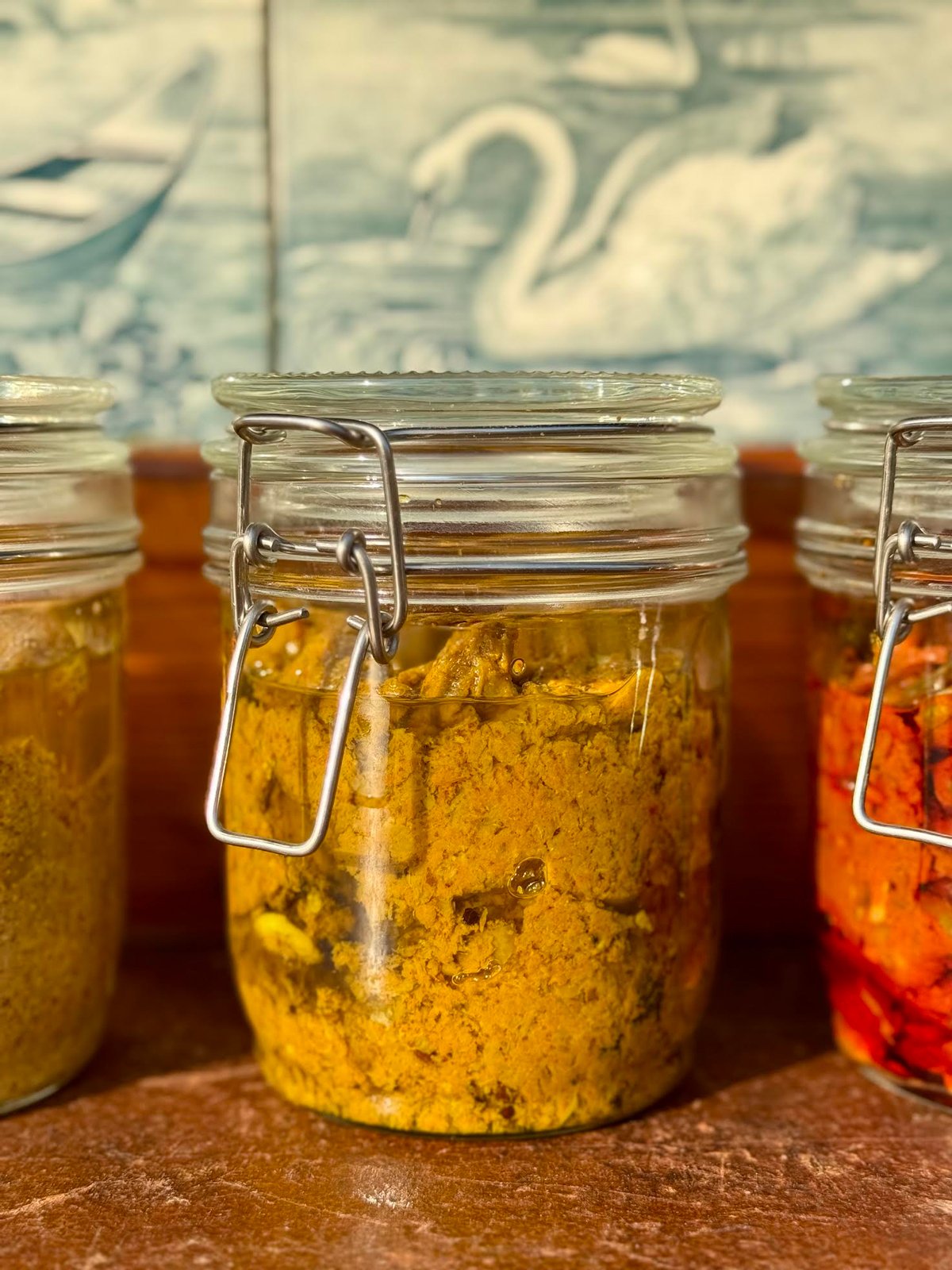
This green tamarind pickle, known as Chintakaya Thokku in Andhra cuisine, is sharp, tangy and naturally spicy — the kind of condiment that wakes up a plate in seconds. Green tamarind is used before it fully ripens, which gives this pickle its bright sourness and slightly fruity edge. In Andhra Pradesh, where bold flavors are part of everyday cooking, this thokku is made during the short tamarind season and stored to enjoy for weeks.
Traditionally, families grind the unripe tamarind with green chilies, curry leaves and roasted spices, then preserve it with oil and salt. A small spoonful is enough to lift a simple meal of rice, ghee and dal, and it’s just as good with parathas or even spread inside sandwiches for a punch of tang and heat.
This pickle is naturally vegan, gluten-free, and a classic example of how regional Indian kitchens preserve seasonal ingredients and turn them into flavor staples that last long after the harvest.
Why You’ll Love This
- Tangy, spicy, and deeply flavorful
- A unique Indian pickle made with seasonal green tamarind
- Naturally vegan and gluten-free
- Keeps well for weeks with proper storage
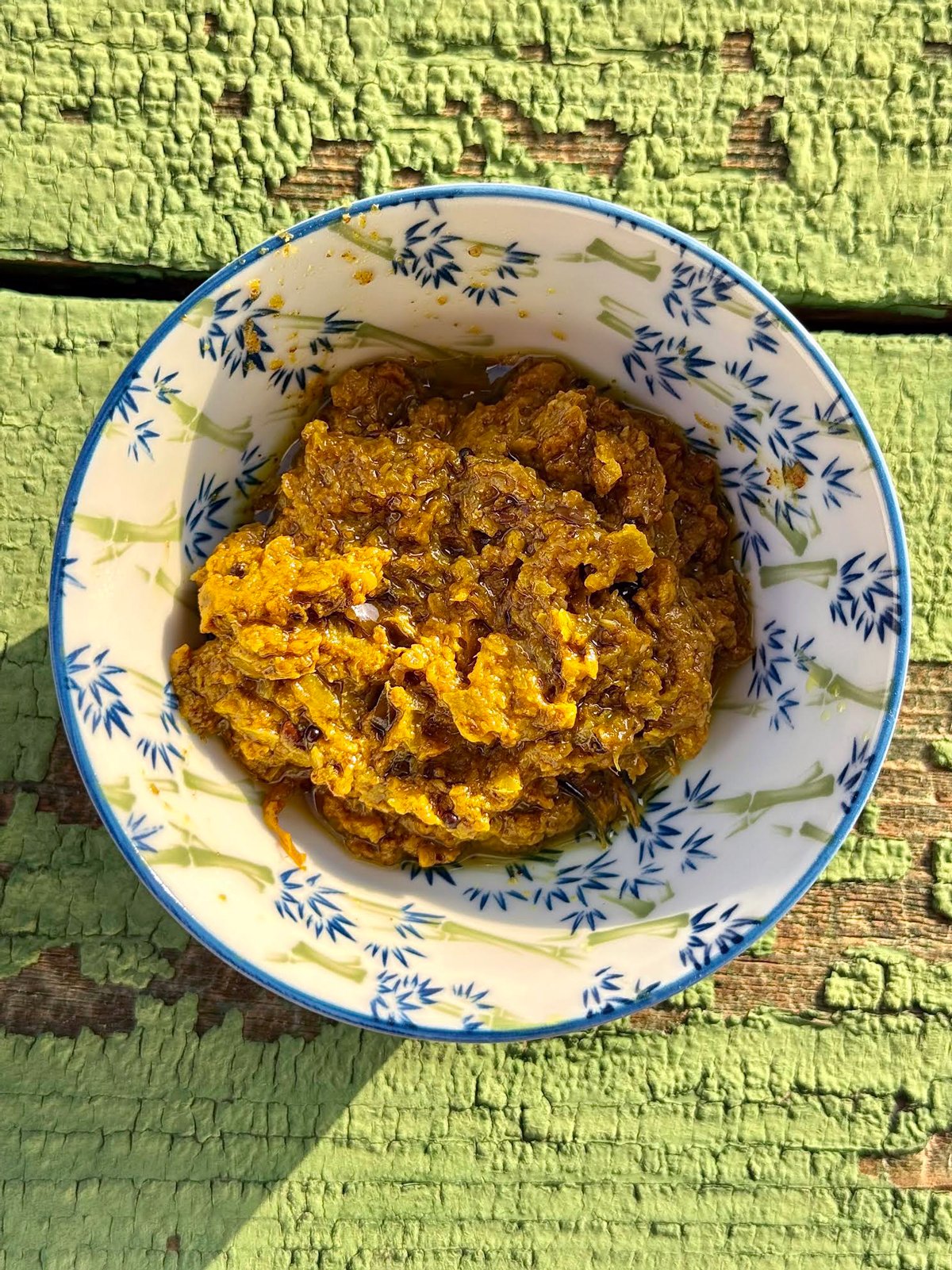

Green Tamarind Pickle
Ingredients
Main
- 9 oz raw green tamarind chintakaya, deseeded
- 8 green chilies
- ½ teaspoon turmeric powder
- 1 teaspoon red chili powder
- 1 teaspoon salt adjust to taste
- ½ cup refined sunflower oil or sesame oil for traditional taste
Spices
- 1 teaspoon mustard seeds rai
- 1 teaspoon cumin seeds jeera
- 1 tablespoon chana dal
- 1 tablespoon urad dal
- ¼ teaspoon fenugreek seeds methi
- Pinch of asafoetida hing
- 10 curry leaves
Instructions
- Prepare the tamarind by washing, deseeding, and roughly chopping it.
- In a dry pan, roast chana dal, urad dal, fenugreek, and cumin until golden. Remove and cool.
- Grind the roasted spices with chilies and tamarind to a coarse paste.
- Heat oil in a pan. Add mustard seeds, curry leaves, and hing. Let them splutter.
- Add the tamarind-spice paste, turmeric, red chili powder, and salt. Stir and cook on low until oil begins to separate, about 10 minutes.
- Cool completely before transferring to a sterilized glass jar. Top with a thin layer of oil.
Notes
- Sesame oil brings a nutty, traditional southern flavor, while sunflower oil keeps it lighter.
- For less heat, simply cut back on the green chilies.
- Store sealed under oil for up to 3 weeks at room temperature, or refrigerate for about 2 months.
Recipe twist ideas
- Add a little jaggery for a sweet-sour balance.
- Mix in roasted garlic for a deeper, savory kick.
- Blend until smooth if you’d like it closer to a chutney.
Nutrition
FAQ
Can I use regular tamarind pulp instead of green tamarind?
No, regular brown tamarind gives a very different sweet-sour taste. This recipe is unique to raw green tamarind.
Is this pickle vegan?
Yes, completely vegan and gluten-free.
Can I freeze it?
Not recommended, as freezing changes the texture.
What do I eat it with?
Traditionally with hot rice and ghee, but also great with roti, bhatura, dosa, or even as a sandwich spread.
Quick Facts: Green Tamarind Pickle (Chintakaya Thokku)
- Region: Andhra Pradesh, India
- Main ingredient: Raw green tamarind (unripe tamarind pods)
- Flavor profile: Bright, sour, spicy, slightly fruity
- Key spices: Green chilies, red chili powder, mustard, cumin, fenugreek, curry leaves
- Oil: Sesame oil for traditional Andhra flavor; sunflower oil for a lighter version
- Preparation style: Ground to a paste, cooked in oil until it separates
- Texture: Thick, coarse, concentrated
- Best with: Hot rice and ghee, parathas, dosa, sandwiches
- Storage: Airtight glass jar, always covered with a thin layer of oil
- Shelf life: ~3 weeks at room temperature when sealed; ~2 months refrigerated
Troubleshooting
Pickle tastes too bitter
The fenugreek may have roasted too long, or the tamarind was very young and extra tangy. Next time, lightly toast fenugreek just until fragrant. You can also balance bitterness with a pinch of jaggery.
Mixture turned too thick or pasty
Green tamarind varies in moisture. Add a spoon or two of warm oil while cooking and stir well to loosen the texture.
Spice tastes harsh or raw
Cook the tamarind mixture on low heat until the oil separates. This step mellows the spices and deepens the flavor.
Pickle isn’t spicy enough
Green chilies vary in heat. Add a little extra red chili powder while cooking or stir some in with warm oil after tasting.
Oil separating on top
Normal for Andhra-style pickles. Stir before serving. The oil acts as a natural preservative, so don’t remove it.
Spoils or ferments quickly
Common causes are moisture or not enough oil covering the pickle. Make sure tamarind is dried after washing, use a clean dry spoon, and always keep a thin layer of oil on top.
Color turned dull
Turmeric and chili powder quality affects color. Fresher spices and gentle cooking help maintain brightness.
Share Your Take
Homemade green tamarind pickle has that bold, fiery edge that makes even the simplest meal exciting. If you give it a try, I’d love to hear how it turned out for you in the comments — and feel free to share it with anyone who loves a good Indian pickle. If you give this pickle a try, drop a comment below, follow me on Instagram and save it on Pinterest.




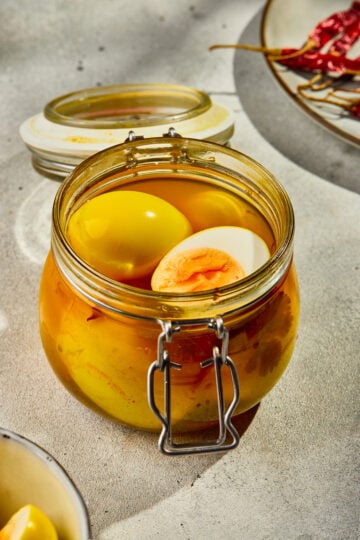
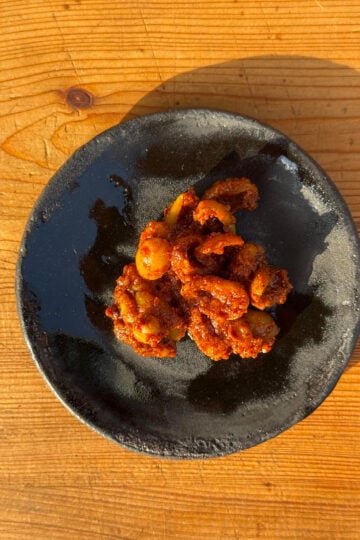
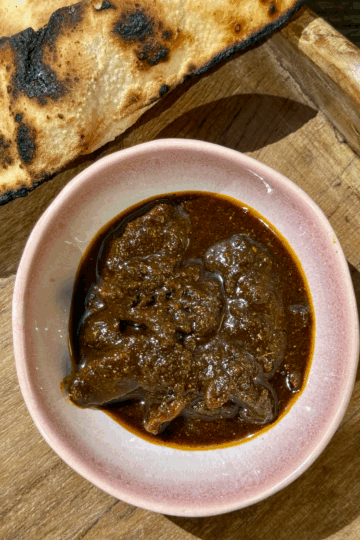
Have a question or something to share? Leave a comment below!